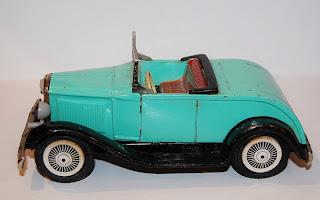For some reason, my post on Fastidious Spam (which was about goofy spam) attracted a fair amount of its own. Goofy spam, that is. My comments are bracketed.
- This is a topic that is close to my heart. .. [I'm sure it is -- spambot] best wishes! Where are your contact details though [to the right, in plain sight]
- Way cool! Some very valid points! [Points you've just helped prove, BTW] I appreciate you penning this post and also the rest of the website is extremely good. [Why thanks. High praise indeed for a spambot.]
- Hey very nice blog! how to cure hemorrhoids at home on Fastidious Spam [OK, that's not an image I want in my brain.]
- Thanks for finally writing about > "Fastidious Spam" < Liked it! [Oh yes, we're into hard-hitting editorials here at Off Topic'd.] Also visit my web page - treatment for hemorrhoids [What is it with hemorrhoids? Is it just professional admiration from one pain the ass to another?]
- What's up to all, it's actually a fastidious for me to pay a visit this site, it consists of priceless Information. [Your use of "fastidious" is priceless to me.]
 |
| This is the toy that inspired spambots to write about lollipop cigarettes, online money, South Africa, and poetry. |
- I used to be able to find good info from you? content. My weblog - South African Government Travel Advisory [So sorry to disappoint. But I didn't have much to say about South Africa in my post about an early 1960's lithographed Japanese toy car.]
- Yes! Finally someone writes about money online. [Really? Well they didn't do it here!]
- Lollipop shaped v2 cigarettes incredibly preferred amongst ladies. [Cryptic advice from the spammers. You heard it hear first, ladies.]
- Hi there colleagues, how is all, and what you wish for to say on the topic of this article, in my view its truly awesome for me. [Yes, how is all, y'all?]
- What a material of un-ambiguity and preserveness of precious familiarity regarding unpredicted feelings. [Sheer poetry.]
And in conclusion, we have a comment that refers back to a previous post and ties everything together nicely.
What's up, this weekend is fastidious for me, since this point in time i am reading this wonderful educational article here at my residence.
Wishing one and all every fastidiousness at their residence.





































